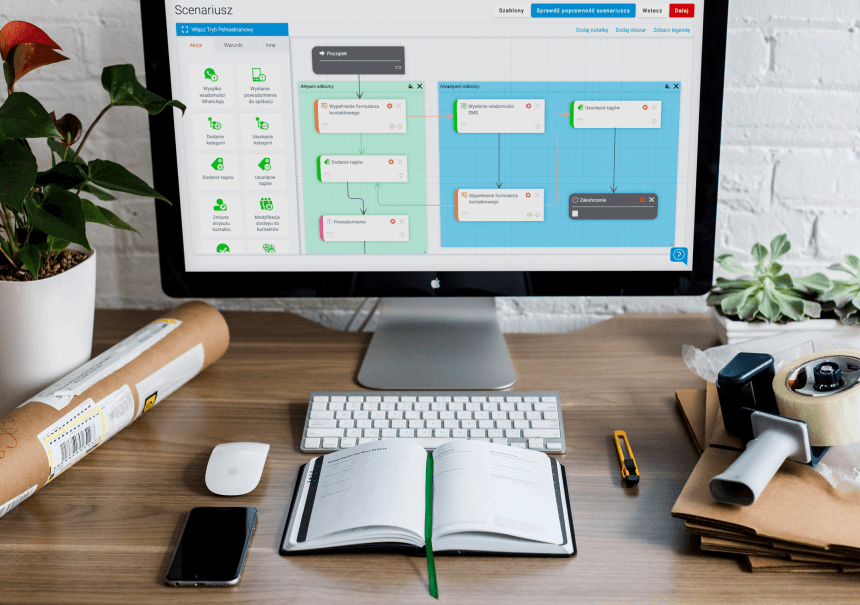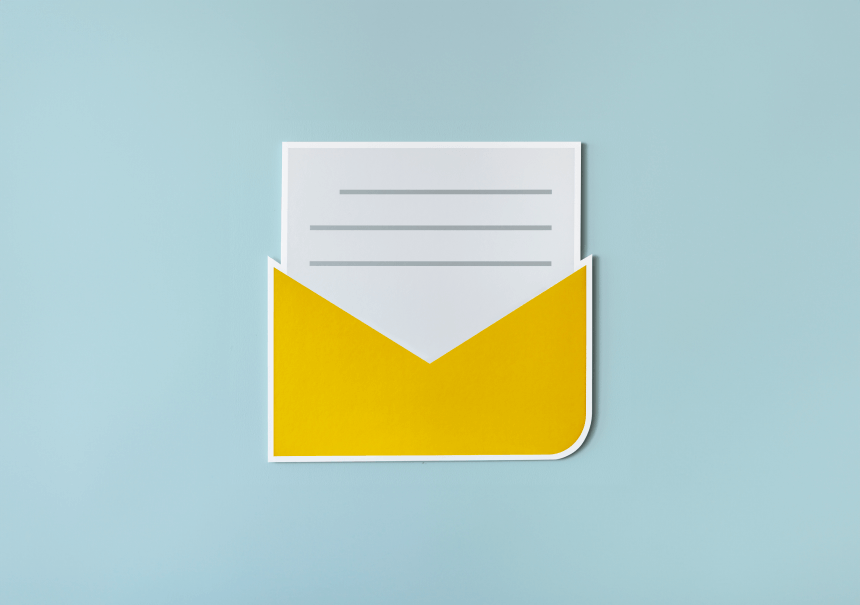Why Marketing Automation scenarios are so important?

Marketing automation scenarios play a central role in all your marketing automation efforts – they steer everything and keep communication between your brand and your customers flowing smoothly. In this post, we want to show you how you can use marketing automation scenarios to streamline work and engage customers.
Imagine this situation: You run an online store, and you’ve just had a new visit to your website. The customer enters the main page and sees a pop-up inviting them to sign up for the newsletter and get a 10% discount for the first order. The customer decides to sign up, places an order, and immediately afterward receives an email confirming the order and providing a tracking link. After a few days, the order is fulfilled, and there is yet another email asking if the customer is satisfied with their order. There is a link to a short survey and an option to leave a review (also for a small discount).
Next, about a week later, the customer gets a push notification informing about new arrivals in the store. About a month later, there is the first newsletter – it contains the latest market trends, a link to an interesting blog post, and a selection of products tailored to this given customer’s interests (based on his previous purchase).
Now, imagine you can do all this on auto-pilot, and not with just one customer but with thousands of other customers visiting your store (or any other company) every month. How is this possible? Thanks to marketing automation scenarios, obviously!
How marketing automation scenarios work
In essence, marketing automation scenarios are based on a series of actions and reactions. The customer does X (e.g., enters the website), and the brand reacts with Y (e.g., displays a newsletter pop-up). Depending on your marketing goals, you can design very simple and complex marketing automation scenarios.
Take a look at how our system looks:
As you can see, there are several actions and conditions (execute an action only if a given condition happens) to choose from. Of course, we understand that these actions and conditions can differ between companies; that’s why we give you a wide range of possible options, and each condition/action is highly customizable so that you can adjust it to your needs and business profile. And if that’s not enough, you can create a brand-new action/condition on your own!
Thanks to this drag-and-drop functionality, you don’t need to know any programming languages in order to create even advanced marketing automation scenarios.
How does it work with the website?
iPresso, in general, has to be integrated with the tools you use in your marketing strategy, including your customer database and your website. Technical integration is one of the very first steps on the way to making marketing automation work seamlessly.
Once your website is integrated with our system, you can create MA scenarios and “upload” them to your website with no involvement from your IT team. This is something our iPresso Studio creator can help you with.
Although yes, probably at the beginning, you’ll need someone’s help to get everything up and running.
Solutions streamlining your work
We’ve made sure to streamline your work with our MA scenarios. For starters, there’s a live reporting feature allowing you to see the contact flow through the scenario. You can view it directly within the scenario draft or in the form of charts and funnels. Everything is readable and accessible so that you don’t have to wait until the end of the campaign to see whether your scenario works as it should.
Secondly, we enable you to mark specific areas and add notes. This way, when working in a team, you can collaborate effectively and exchange ideas and suggestions to make your marketing automation scenarios as effective as possible. If you need to show your scenario during a company meeting, you can simply download your scenario as a picture. This feature will also help you go back to previous scenarios if needed.
Why do you need marketing automation scenarios?
Partly, we’ve already answered this question. Marketing automation scenarios allow you to navigate the communication between your brand and your customers. You can easily make sure everything works the way you want and that every person that takes a specific action will receive a proper reaction from the company.
This also significantly contributes to customer engagement. Customers that regularly get communication from the brand (and some incentives, too) feel well-taken-care-of and are more likely to place more orders and interact with the brand in a more active manner.
Obviously, marketing automation scenarios offer also huge time savings for your company. Instead of worrying if all the materials were sent to the customer or whether they got the latest newsletter, everything is automated. As a result, your team can focus on more strategic actions and leave all the repeatable actions to our algorithms!
And speaking of our algorithms, would you like to give marketing automation scenarios a shot? If so, we are happy to assist you! All you need to do is fill out and send this short contact form. It will give you access to a free trial of our platform. And don’t worry, we are happy to assist you along the way; you can always count on our support! 🙂



